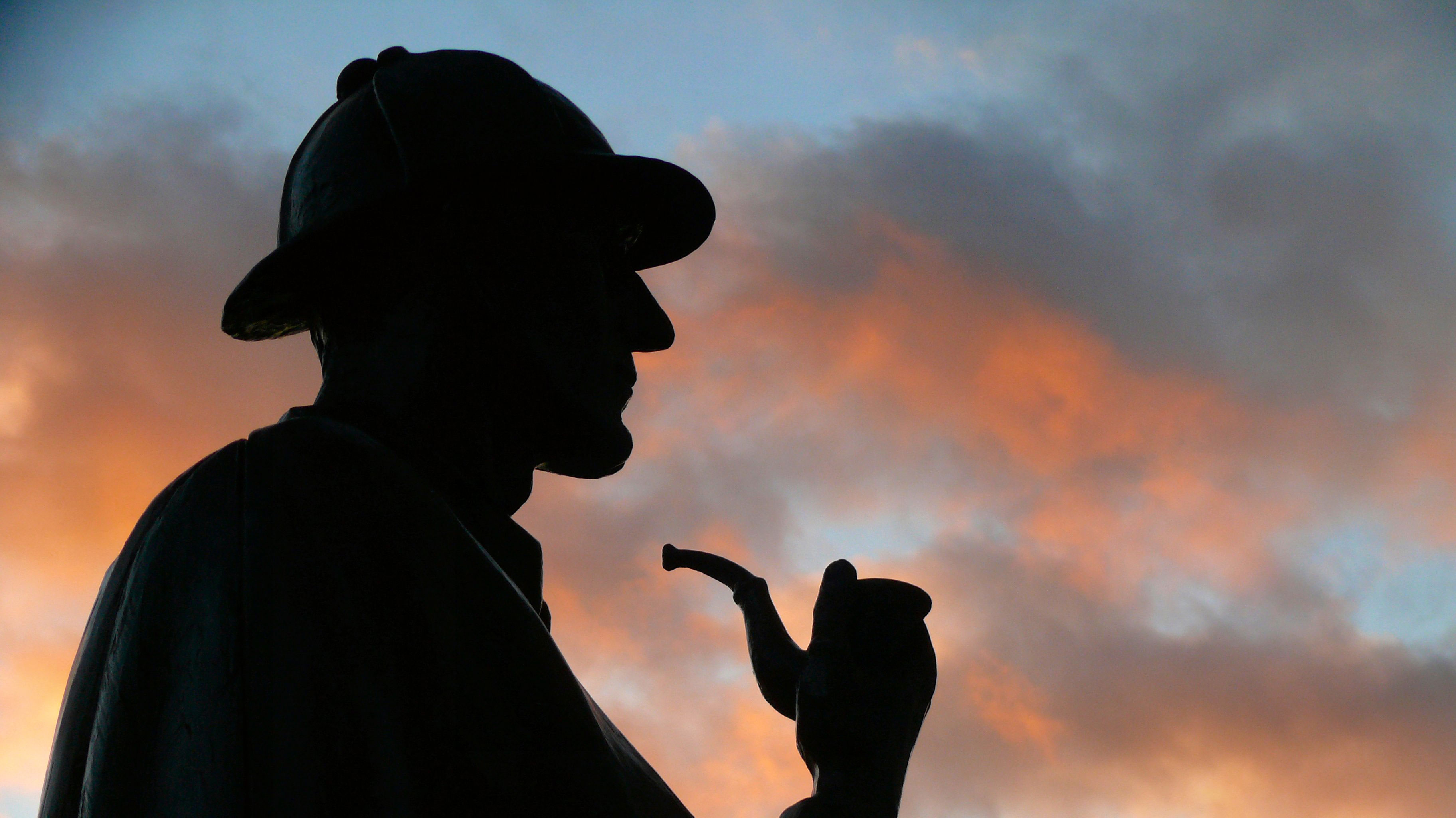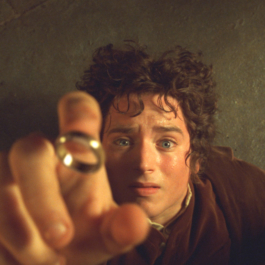HOLMES: You have described me as six-foot-four, whereas I am barely six-foot-one.
WATSON: A bit of poetic license.
HOLMES (removing Inverness and deerstalker): You have saddled me with this improbable costume, which the public now expects me to wear.
WATSON: That’s not my doing. (indicating the cover of Strand) Blame it on the illustrator.”
– from the film The Private Life of Sherlock Holmes
You know you have been playing ‘The Game’ if this tongue-in-cheek opening of Billy Wilder’s movie made you smile, for true Sherlockians know that the famous consulting detective’s height was ever only described as “rather over six feet”, that the coat was an Ulster (not an Inverness cape), and that no precise reference has ever been made to a deerstalker cap, but that they were introduced by Sidney Paget in his illustrations for The Strand Magazine.
True Sherlockians have wondered, even for just a second, whether Dr Watson’s first name was John, as described in A Study in Scarlet and a couple of other instances, or James, as in The Man with The Twisted Lip. Whether he was wounded during his service in Afghanistan in his shoulder (A Study in Scarlet) or his leg (The Sign of the Four). Whether Violet Hunter actually tried to woo Holmes in The Adventure of the Copper Beeches (a theory supported by many).
Luckily for fans, hundreds of scholars have applied themselves to playing the Sherlockian Game, the goal of which is to explain inconsistencies and clarify implied details about the series’ characters. Over the years, many of these attempts have led to the development of novels and short stories that became classics of their own – often despite copyright issues.
Sit tight: we have chosen 12 of the most famous examples, for all Sherlockians willing to see how far The Game will go.
‘The New Annotated Sherlock Holmes’, by Leslie Klinger (3 Volumes)
Scholars fond of The Game seldom refer to Sir Arthur Conan Doyle, playing on the assumption that Holmes is a real person, and Conan Doyle only Watson’s literary agent. This is the line followed by Leslie Klinger, whose annotations attempt to provide historical context and explain the abnormalities in Conan Doyle’s storyline. A must-read, corroborated by an enormous amount of research and completed with reproductions of Sidney Paget’s original illustrations. amazon.com
‘The Seven Percent Solution’, by Nicholas Meyer
Love it or hate it, The Seven Percent Solution is one of the most famous Holmes pastiches, centred on Holmes’s dangerous consumption of cocaine (legal at the time, and a popular component of beverages) and its consequences, shedding a light on Holmes’s reasons for opposing Professor Moriarty. Enlisting the help of none other than Dr Sigmund Freud, and revealing never-before-seen details about Holmes’s family, Meyer’s novel has become a classic among Sherlock fans. amazon.com
‘The Exploits of Sherlock Holmes’, by Adrian Conan Doyle and John Dickson Carr
Ever wonder where that “Elementary, my dear Watson” came from, as it is nowhere to be found in Conan Doyle’s work? This is one of the sources (though not the first). The collection of 12 short stories expands on cases which were briefly mentioned by Watson in the original stories, but never told. Written by Sir Arthur’ son Adrian together with American mystery writer Dickson Carr (Conan Doyle’s biographer), it is very close to the Sherlock Holmes canon. amazon.com
‘Sherlock Holmes Through Time and Space’, edited by Isaac Asimov
Conan Doyle himself wasn’t new to science fiction, having authored some of his own works in the genre. And Asimov wasn’t new to Sherlock Holmes: he was, in fact, a member of prestigious literary society the Baker Street Irregulars. While this wasn’t the first attempt at merging the great detective with science fiction, it was surely the most famous. Recommended only if you’re prepared to see Holmes deal with aliens and cyborgs, with a short story written by Asimov for real Sherlockians (hint: it has to do with The Dynamics of an Asteroid). amazon.com
‘The Misadventures of Sherlock Holmes’, edited by Ellery Queen
Yes, there are Holmes adventures written and curated by Ellery Queen, aka American writers Frederic Dannay and Manfred Lee. The news itself is enough to fill a mystery fan with awe, but wait, there’s more: first, Dannay himself was a member of the Baker Street Irregulars; secondly, this volume contains short stories by Agatha Christie and Mark Twain; and lastly, it’s limited edition by default. The book was published in 1944, when Conan Doyle’s works were still copyrighted, causing a legal dispute which was resolved with the promise to cease printing the book. To this day, it has never again been published. ebay.com
‘Mycroft Holmes’ by Kareem Abdul-Jabbar and Anna Waterhouse
Mycroft is a great character in his own right, and this is not the first novel which sees Sherlock’s brother as its protagonist. The merit of this work, however, lies in ingeniously overcoming Mycroft’s signature “laziness” by setting the story at the beginning of his political career, when he was only 23 years old. And while no mention is made of the famous Diogenes Club member having been, at some point, the “M” of James Bond fame (as some suppose), he gets a well-deserved background story in this novel. amazon.com
‘The Return of Moriarty: Sherlock Holmes’s Nemesis Lives Again’, by John Gardner
“The Napoleon of crime”, aka genius mastermind Professor Moriarty, comes back (literally, as this is set post-Reichenbach) as the protagonist in three novels written by John Gardner, of which this is the first. While forced to deal with big crime organisations on one side and Scotland Yard on the other, the story provides much-needed depth and a hint of humanity to Moriarty’s character, which was only briefly mentioned in a couple of instances in the canon. To read if Holmes isn’t enough of an antihero for you. amazon.com
‘The Adventures of Inspector Lestrade’, by M. J. Trow
The first of 16 books by Welsh author and historian M. J. Trow dedicated to the Scotland Yard inspector, these novels have earned praise for their perfect reconstruction of the Victorian era. Seeing Lestrade in the part of the protagonist might feel uncomfortable to some, yet the author succeeds in keeping some of his original “clumsiness” intact, all while adding a refreshing sense of humour to the mix. And while Sherlockians notoriously stand against the appearance of famous figures in pastiches, references made by Trow are historically accurate and never far-fetched. amazon.com
‘In Re: Sherlock Holmes – The Adventures of Solar Pons’ by August W. Derleth
Dubbed “the king of pastiche writers” by renowned Holmes scholar Baring-Gould, August W. Derleth is a very famous name in Sherlockian circles. The writer started the The Solar Pons as a remedy to Conan Doyle’s decision to stop writing Holmes’ stories, and the series went on to become a classic in its own right, containing 70 published stories (more than the canon) and birthing its own literary societies and even its own pastiches. The detective has been defined as “a clever impersonator, with a twinkle in his eye” and his stories are considered by many the best Holmes pastiches ever written. amazon.com
‘The Incredible Schlock Homes’, by Robert L. Fish
No typos here. Schlock Homes. Living on Bagel Street with his old friend Dr Watney. A well-crafted parody of Sherlock Holmes with tons of puns and hilarious titles, Fish’s stories originally appeared in Ellery Queen’s Mystery Magazine in 1959-63. Throughout the years, Holmes’s parodies have been countless, but Picklock Holes, Sheerluck Hums, Watsoname, Whatsup and the like are no match for Schlock Homes. The only parody mentioned by Baring-Gould in his annotated version, and defined by scholars as “small masterpieces of adroit and devious plotting”, the stories definitely constitute an enjoyable read for all fans. This volume includes the first 12 stories out of a total of 32. amazon.com
‘Good Night, Mr Holmes’ by Carole Nelson Douglas
“To Holmes, she is always the woman”, says Watson of Irene Adler, the only woman for which Sherlock Holmes showed any signs of admiration. Nelson Douglas lives up to the challenge in her series of Adler-centred novels (9 to date, of which this is the first), where the famous opera singer is assisted by her own Watson of sorts, Penelope Huxleigh, as she investigates blackmail, murder and much more. To read if you found Irene’s numerous depictions as a gold-digger in film and literature grossly unfair. amazon.com
‘A Slight Trick of the Mind’ by Mitch Cullin
The 2005 novel behind the latest movie adaptation, A Slight Trick of the Mind deals with a 93-year-old Holmes in retirement, attending to his bees in a cottage in Sussex. Battling with a failing memory as he tries to recall details from two past cases, the old man takes on a boy as apprentice beekeeper, who will be the protagonist in a case of his own. As other authors before, Cullin tries to shed some light on Holmes’s human sides, including a sense of regret for his lack of social skills, and the will to make up for past mistakes. He effectively portrays a Holmes who is modest, brilliant and even loving in all his human limitedness – far from the cold rational character we are familiar with, but nevertheless an interesting, poignant impersonation. amazon.com
Finally, if you dream of writing your very own pastiche, fear not: you’re in good company, and the majority of the Sherlock Holmes canon is public domain in many countries (check your country’s copyright laws). After all, as stated by eminent scholar Edgar W. Smith, “there is no Sherlockian worthy of his salt who has not, at least once in his life, taken Dr Watson’s pen in hand and given himself to the production of a veritable adventure”. Sherlockians will be forever grateful. The Game goes on.
Article by Guest Editor Livia Formisani














Sorry, the comment form is closed at this time.